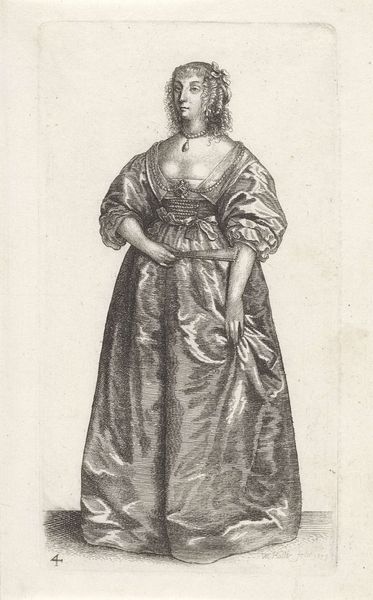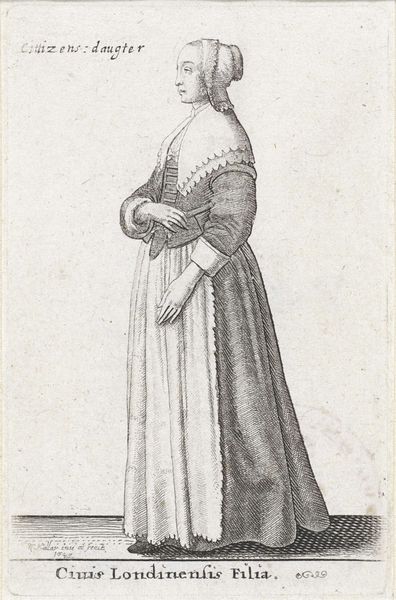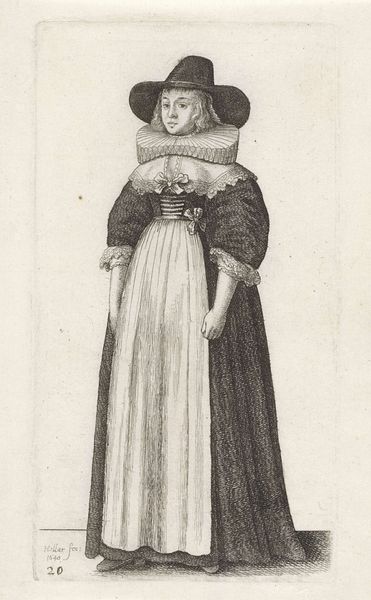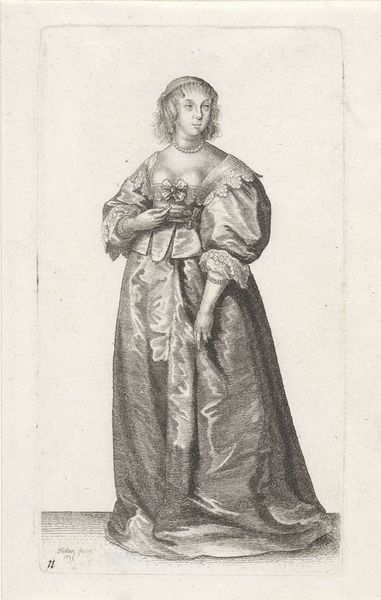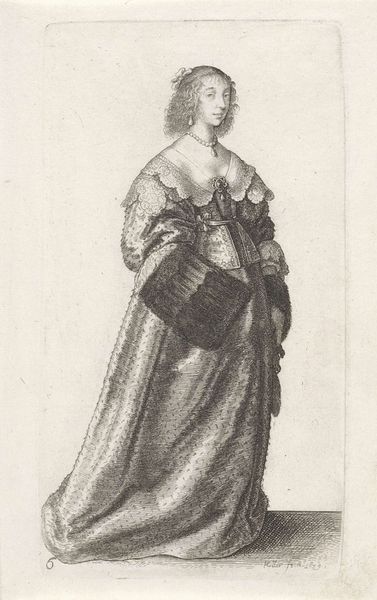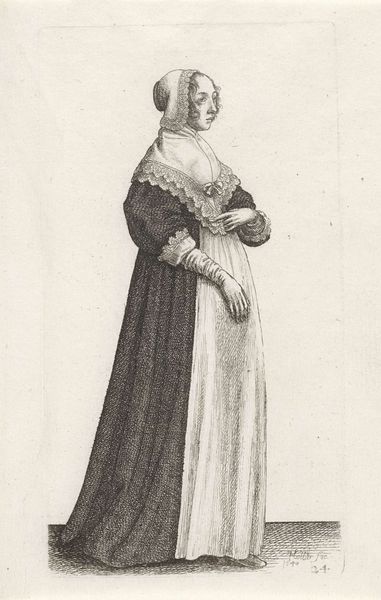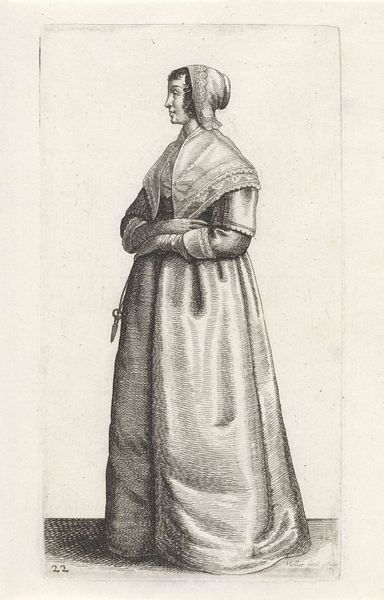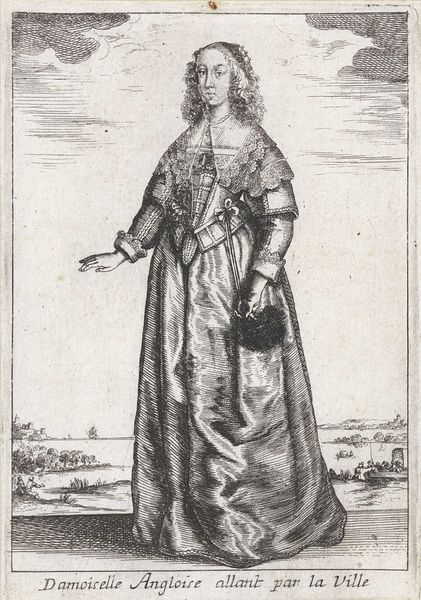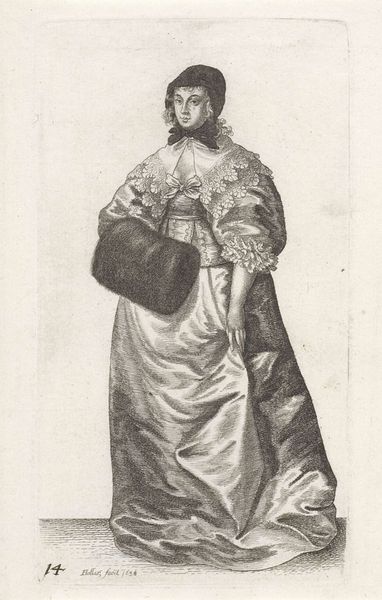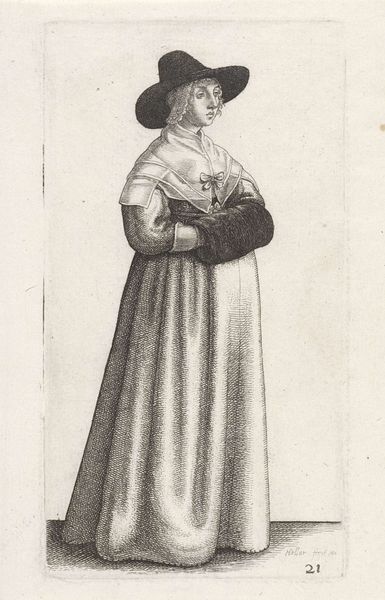
Ornatus Muliebris Anglicanus (The Clothing of English Women) 1640
0:00
0:00
print, engraving
#
portrait
# print
#
14_17th-century
#
portrait drawing
#
genre-painting
#
history-painting
#
engraving
Dimensions: height 133 mm, width 73 mm
Copyright: Rijks Museum: Open Domain
Wenceslaus Hollar created this engraving, “Ornatus Muliebris Anglicanus,” which translates to “The Clothing of English Women,” during a period of significant social and political upheaval in England. Hollar, a Bohemian artist working in England, captured the styles worn by women during the mid-17th century. The print depicts a woman adorned in the attire of the English elite, reflecting the rigid class structure of the time, where fashion served as a visual marker of social standing. Her elaborate gown, complete with lace detailing and a high waist, speaks to the economic disparities of the era. The clothing not only signifies wealth but also plays a role in defining feminine identity. The layers and structured silhouette confine the body, adhering to the prevailing ideals of modesty and decorum. These fashion plates offer a glimpse into the negotiation of identity and the performance of gender roles within 17th-century English society. Through his detailed rendering, Hollar invites us to reflect on the complex interplay between fashion, identity, and social status.
Comments
rijksmuseum about 2 years ago
⋮
The diversity of women’s apparel in England is illustrated in this extensive costume series. Hollar represented women from all ranks of society, from the humble countrywoman 1 to the elegant noblewoman 2. The more fashionable costumes are based on eyewitness observation of the ladies at the court of the Earl of Arundel, Hollar’s primary patron. They are therefore among the more reliable visual sources for costume historians.
Join the conversation
Join millions of artists and users on Artera today and experience the ultimate creative platform.

